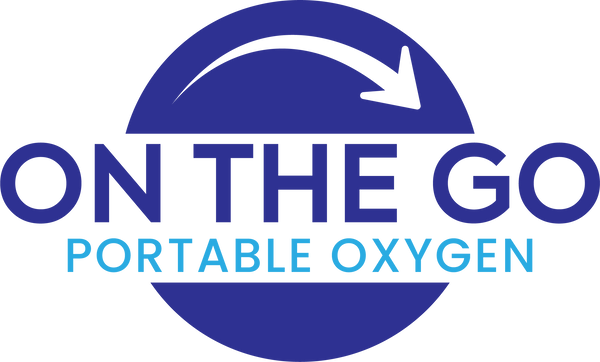Portable Oxygen Concentrator vs. Oxygen Tank: Which is right for you?
Share
Selecting the appropriate oxygen equipment can have a big impact on your quality of life. Oxygen tanks and portable oxygen concentrators (POCs) are the two main choices. They meet diverse demands and lifestyles, even though they both have the same function which is to provide oxygen. Here’s a quick comparison to help you make the right choice for your needs.
Knowing the Fundamentals
Portable Oxygen Concentrators (POCs): Draw oxygen from the surrounding air, compressing and purifying the air. This process removes the nitrogen and other agents. POCs are lightweight and compact devices made for mobility and active lifestyles. As long as you have access to a power source or a charged battery, a portable oxygen concentrator can provide an endless supply of oxygen.
Oxygen tanks: These can hold liquid or compressed gas oxygen stored inside a tank or cylinder. When the tank is turned on, oxygen is released to the patient through a tube or mask. When the oxygen supply runs low, it needs to be replaced or refilled regularly.
Pros of Portable Oxygen Concentrators:
- Unlimited Supply of Oxygen: A portable oxygen concentrator can give oxygen as long as you have a power source or a fully charged battery. Compared to tanks, which will eventually run out.
- Compact and Lightweight: Portable oxygen concentrators are made to be small and light. Many are easy to carry, as they weigh less than tanks.
- FAA-Approved for Travel: Unlike oxygen tanks, which are frequently prohibited on airlines, a large number of portable oxygen concentrators are permitted for use on aircraft. They are therefore perfect for regular travelers.
- No refills: The oxygen is generated from the air so you don’t need to refill or replace tanks.
Cons of Portable Oxygen Concentrators:
- Requires Power: Oxygen concentrators need to be plugged in or have a charged battery to function.
- Higher Initial Cost: While there are no recurring refill costs, the initial price of an oxygen concentrator is typically higher than that of an oxygen tank.
- Battery Life: Battery life on portable oxygen concentrators can vary depending on the battery. They may need to be recharged frequently if they are used for extended periods.
Pros of Oxygen Tanks:
- No Power Needed: Oxygen tanks don’t require batteries or a power source to function.
- Cost-effective upfront: Tanks have a lower initial cost than portable oxygen concentrators.
Cons of Oxygen Tanks:
- Limited Supply: Oxygen tanks have a limited amount of oxygen. it’s gone. Once you run out of oxygen you need to refill or replace the tank.
- Bulky: Even small tanks can be hard to carry, especially for those needing higher oxygen flow rates. Larger tanks used for home care are difficult to transport and may not be suitable for active patients.
- Refills and Replacements: You’ll have to regularly refill or replace the oxygen tanks, which can add up in cost over time.
- Travel Restrictions: Oxygen tanks are often not allowed on airplanes or other forms of transportation due to safety concerns.
- Safety Risks: Oxygen tanks can pose a fire hazard if there’s a leak or improper handling since oxygen-enriched environments increase the flammability of materials.
Key Differences Between Portable Oxygen Concentrators and Oxygen Tanks
|
Feature |
Portable Oxygen Concentrators (POCs) |
Oxygen Tanks |
|
Oxygen Supply |
Unlimited (as long as the concentrator has power) |
Limited (must be refilled when the oxygen runs out) |
|
Power Source |
Battery-operated or plugged into an electrical outlet |
Does not require power (except for certain devices) |
|
Portability |
Lightweight and compact (typically 2- 6lbs) |
Heavy and cumbersome, especially larger tanks |
|
Oxygen Delivery |
Pulse-dose or continuous flow (depending on model) |
Continuous flow |
|
Air Travel |
Many models are FAA-approved for use on airplanes |
Not allowed on airplanes |
|
Initial Cost |
Higher upfront cost |
Lower initial cost |
|
Ongoing Costs |
Low—mostly battery replacements and occasional parts |
Ongoing costs for refills and tank replacements |
Which is right for you?
Both portable oxygen concentrators and oxygen tanks serve the same fundamental purpose: to provide oxygen to individuals who need it. The choice between them largely depends on your lifestyle, oxygen needs, budget, and personal preferences.
- If you prioritize mobility, convenience, and long-term savings, a portable oxygen concentrator may be the best choice. With no refills, lightweight design, and travel-friendly, a POC offers freedom and flexibility.
- If you need higher oxygen flow rates, are on a tighter budget, or don’t mind regular refills, an oxygen tank may suit your needs better.
